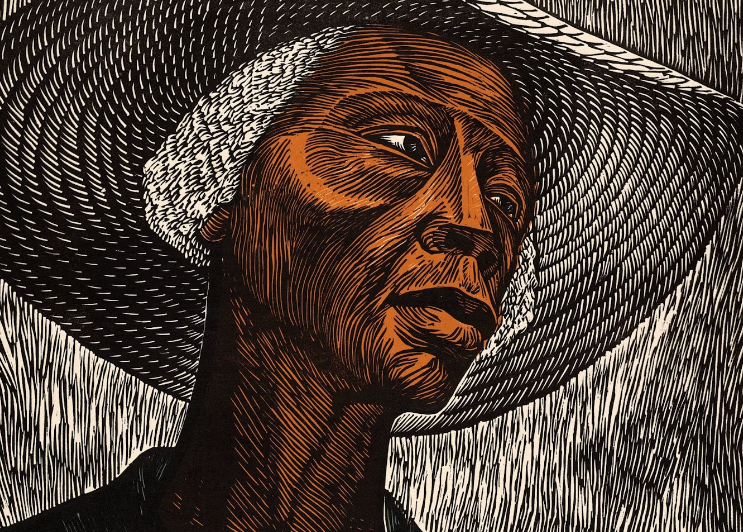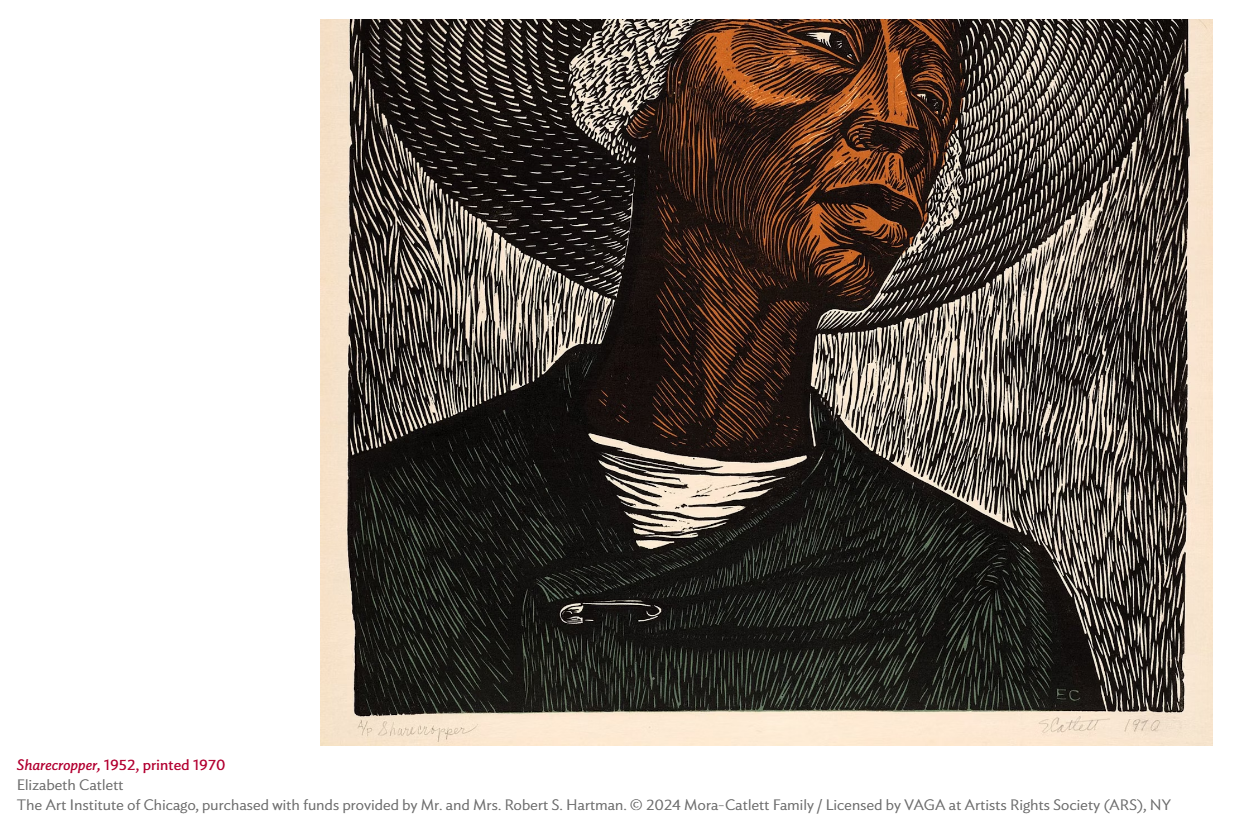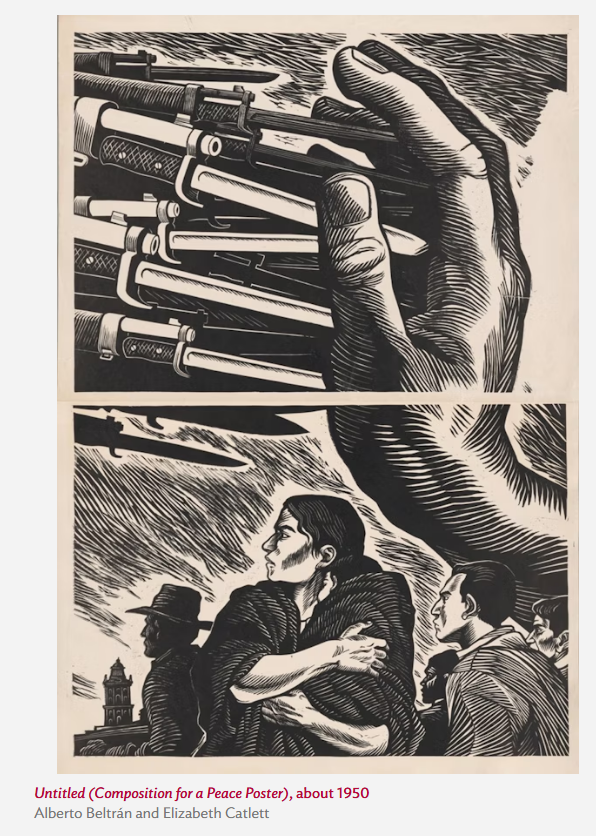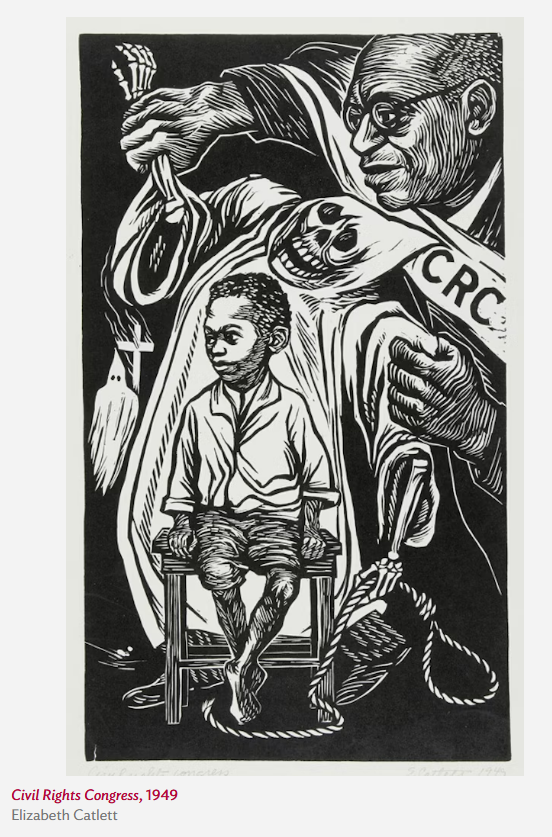Elizabeth Catlett: A Revolutionary Artist's Enduring Legacy

Elizabeth Catlett (1915-2012) declared herself a "Black revolutionary artist," a title that resonated deeply throughout her life and continues to resonate powerfully today. A new retrospective exhibition, "Elizabeth Catlett: 'A Black Revolutionary Artist and All That It Implies'," finally gives this significant artist the overdue recognition she deserves, showcasing over 100 works spanning her remarkable career. The exhibit, a collaboration between the Brooklyn Museum, the National Gallery of Art, and the Art Institute of Chicago, powerfully demonstrates Catlett's profound impact on art and activism.
By Richard Walker

image credit:
The exhibition's title itself, drawn from a 1970 speech Catlett delivered from Mexico – after being denied a US visa – underscores the deeply political nature of her art. Her statement, “I have been, and am currently, and always hope to be a Black revolutionary artist, and all that it implies,” encapsulates her unwavering commitment to social justice and the fight against oppression. This wasn't merely a label; it was a declaration of purpose, informing every sculpted form, every print, every drawing.

image credit:
Catlett's work unflinchingly confronts poverty, racism, and imperialism. Her powerful imagery celebrates Black womanhood, family, and resilience in the face of adversity. The sculptures, prints, and drawings featured in the retrospective reveal a multifaceted artist whose skill extended across mediums, each piece a testament to her unwavering belief in the transformative power of art. The exhibition allows viewers to trace her artistic evolution, witnessing her stylistic growth while maintaining a consistent commitment to social commentary.

image credit:
Curated by a team of experts including Dalila Scruggs (Augusta Savage Curator of African American Art, Smithsonian American Art Museum), Catherine Morris (Sackler Senior Curator, Elizabeth A. Sackler Center for Feminist Art, Brooklyn Museum), and Mary Lee Corlett (associate curator of modern prints and drawings (retired), National Gallery of Art), alongside Rashieda Witter and Carla Forbes, the exhibition is more than a simple collection of artworks. It's a carefully curated narrative that contextualizes Catlett's life and work within the broader historical landscape of the 20th century. It highlights her struggles, her triumphs, and her enduring contribution to the ongoing fight for equality.
"Elizabeth Catlett: 'A Black Revolutionary Artist and All That It Implies'" is not just a retrospective; it is a vital intervention. It serves as a reminder of the crucial role art plays in social change and offers a powerful visual testament to the enduring legacy of a woman who dedicated her life to using her artistry as a tool for revolution. By showcasing her work, the exhibition invites audiences to engage with Catlett's powerful message and continue the fight for social justice she championed. This is an exhibition that is both historically significant and profoundly relevant to the contemporary moment.